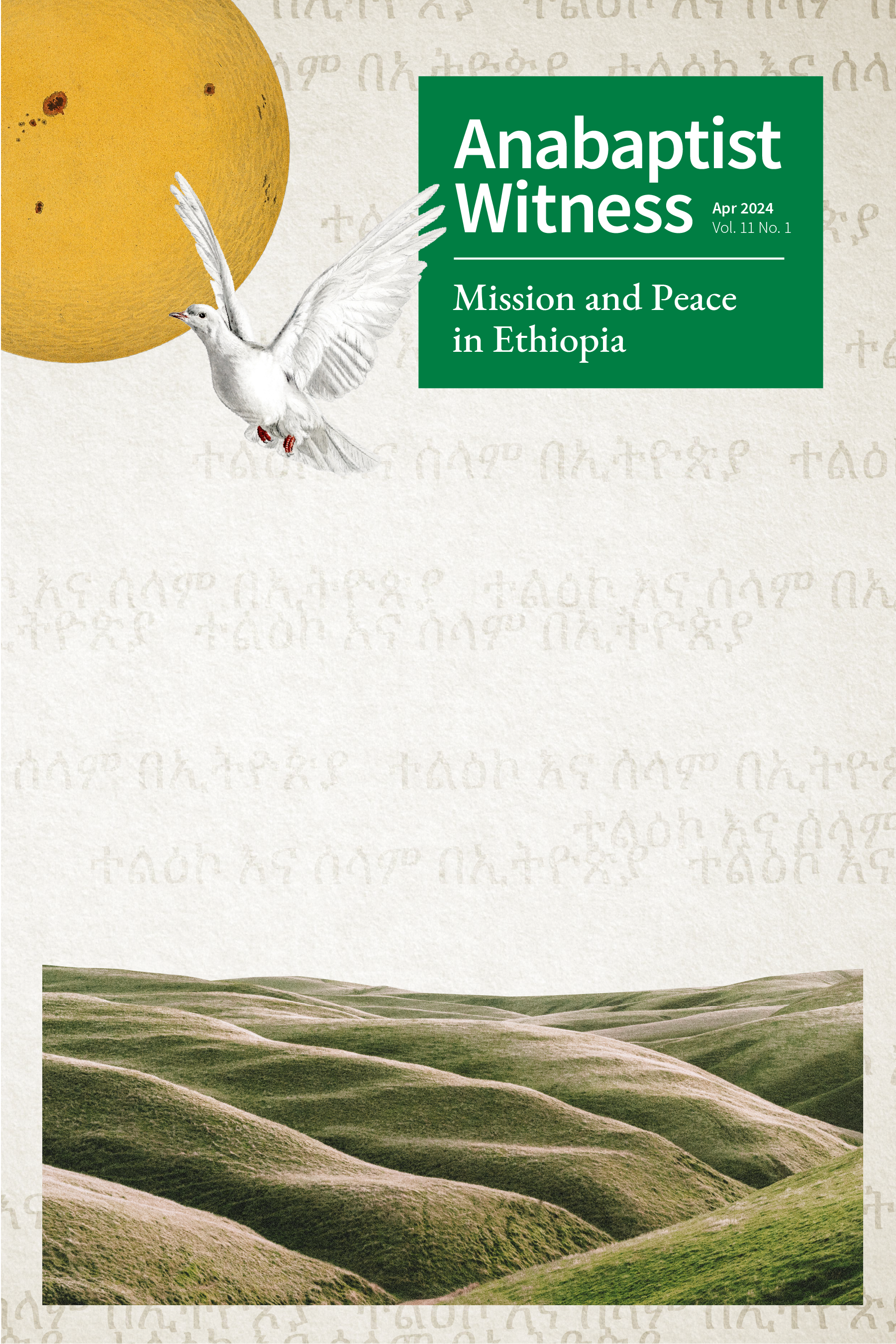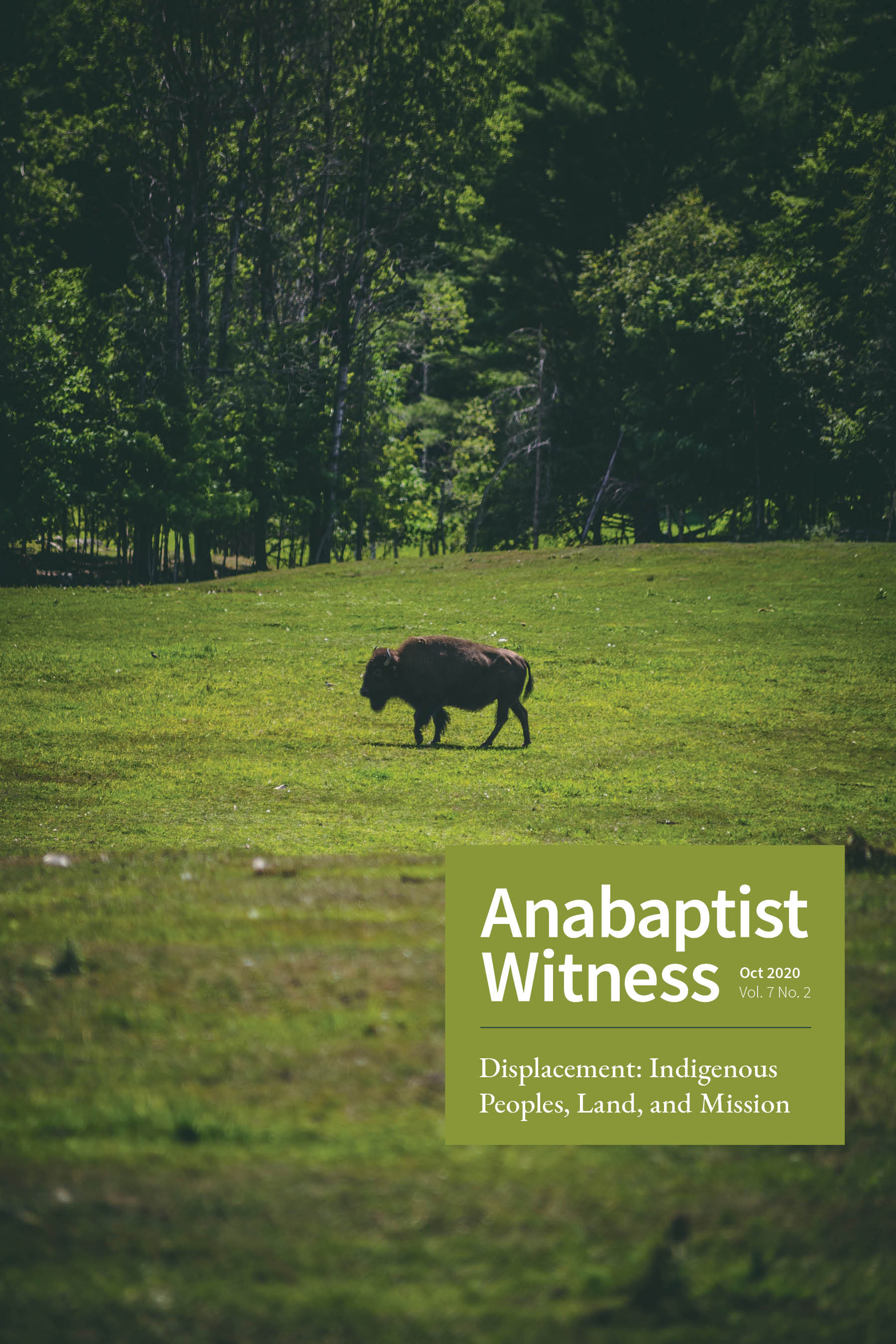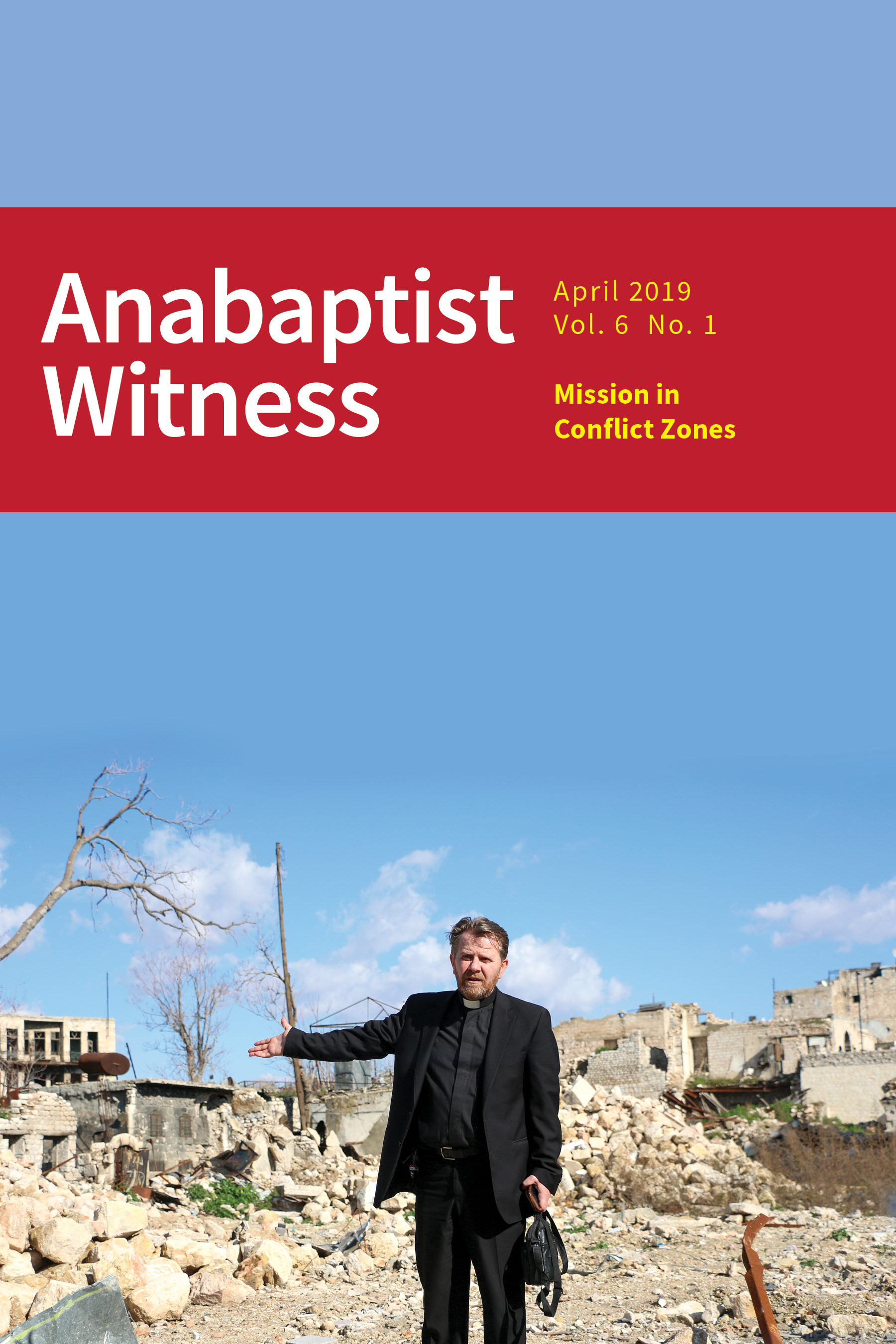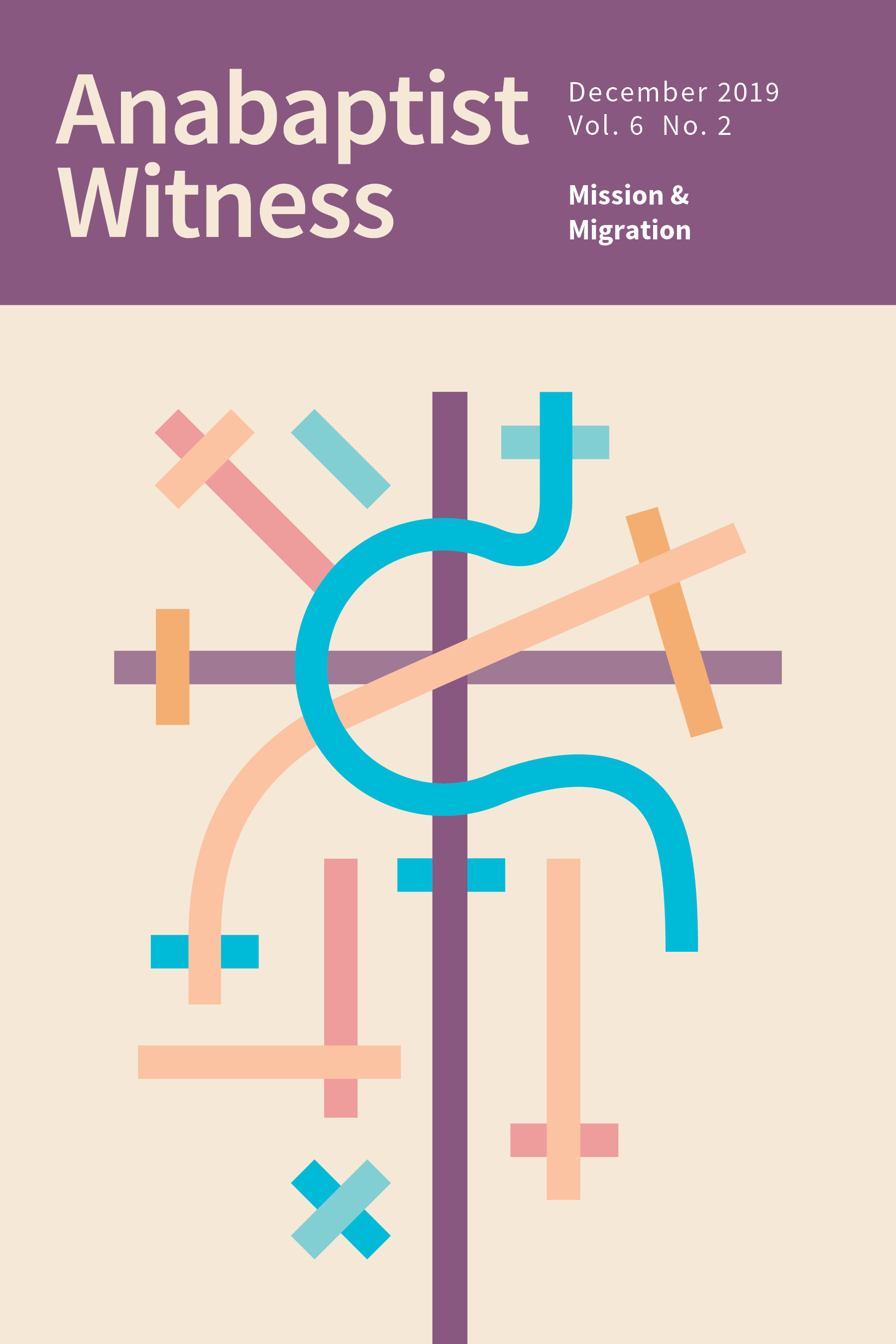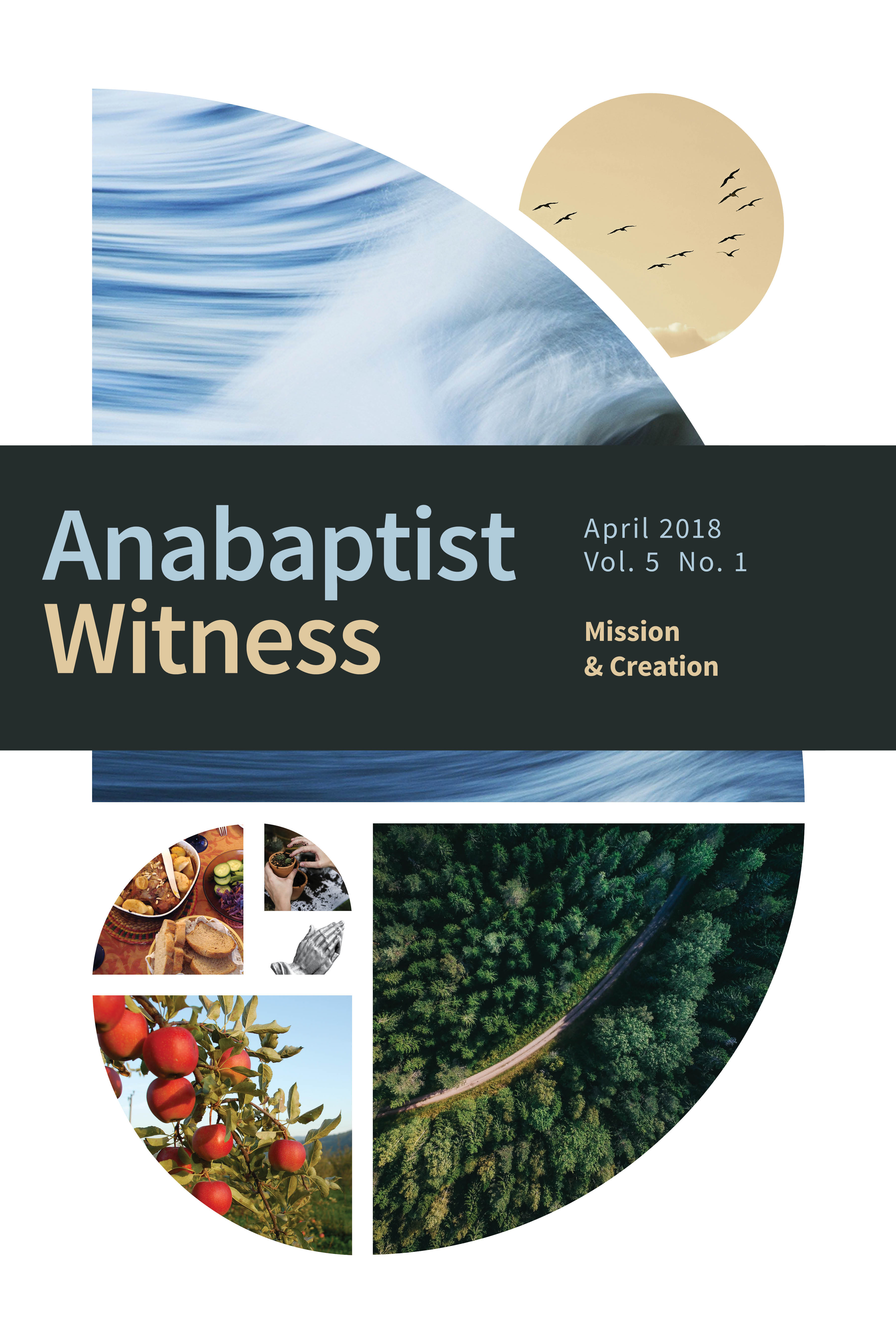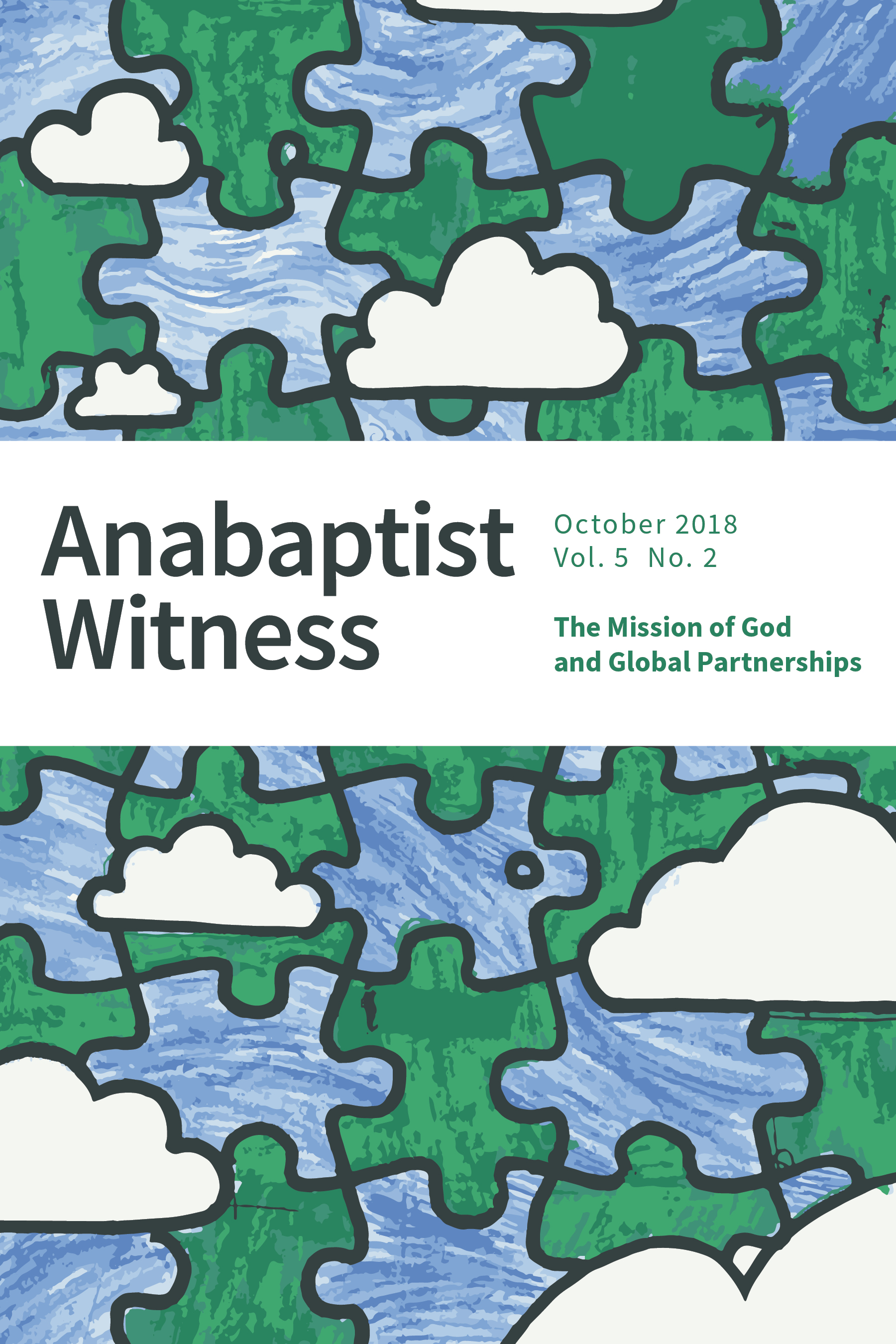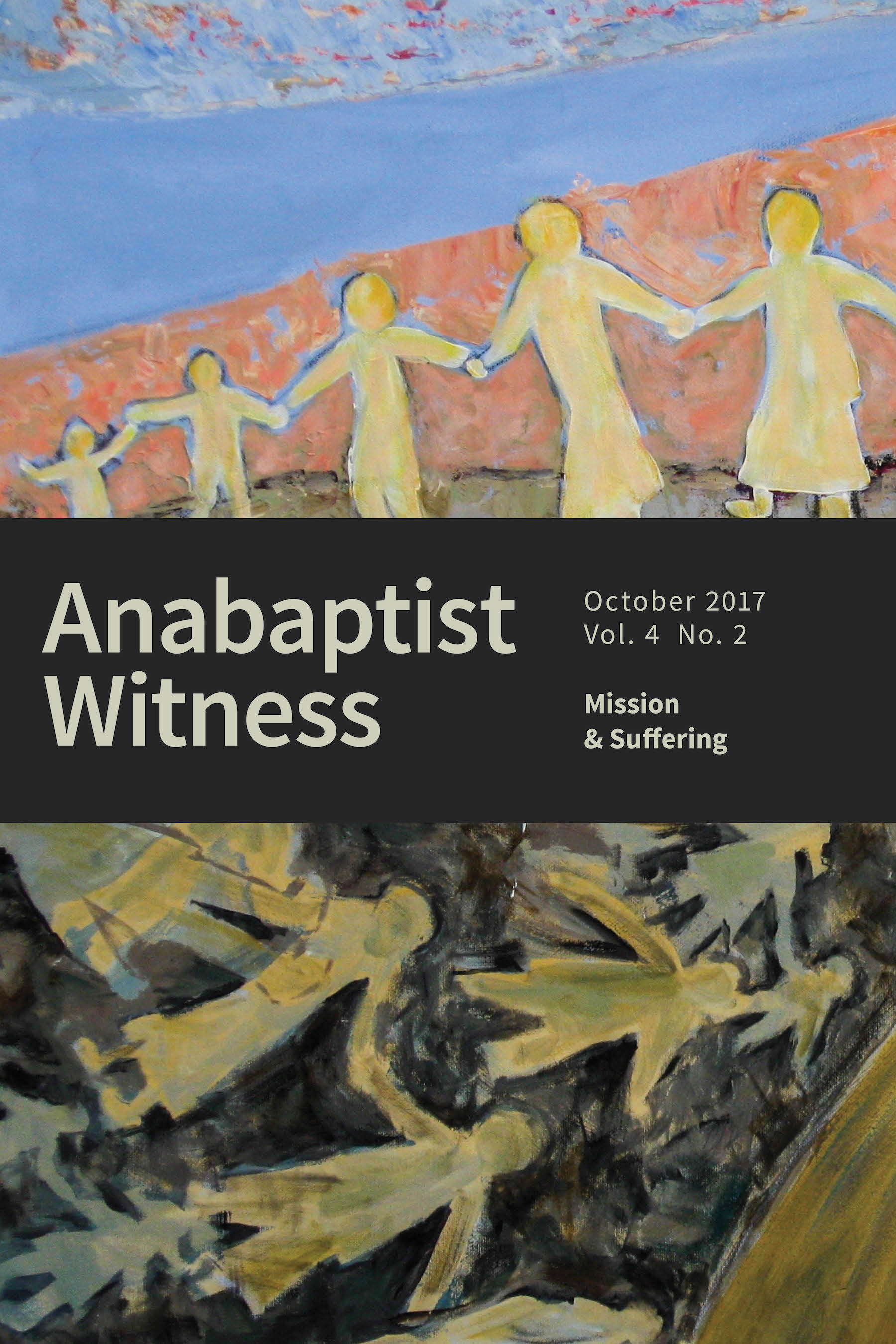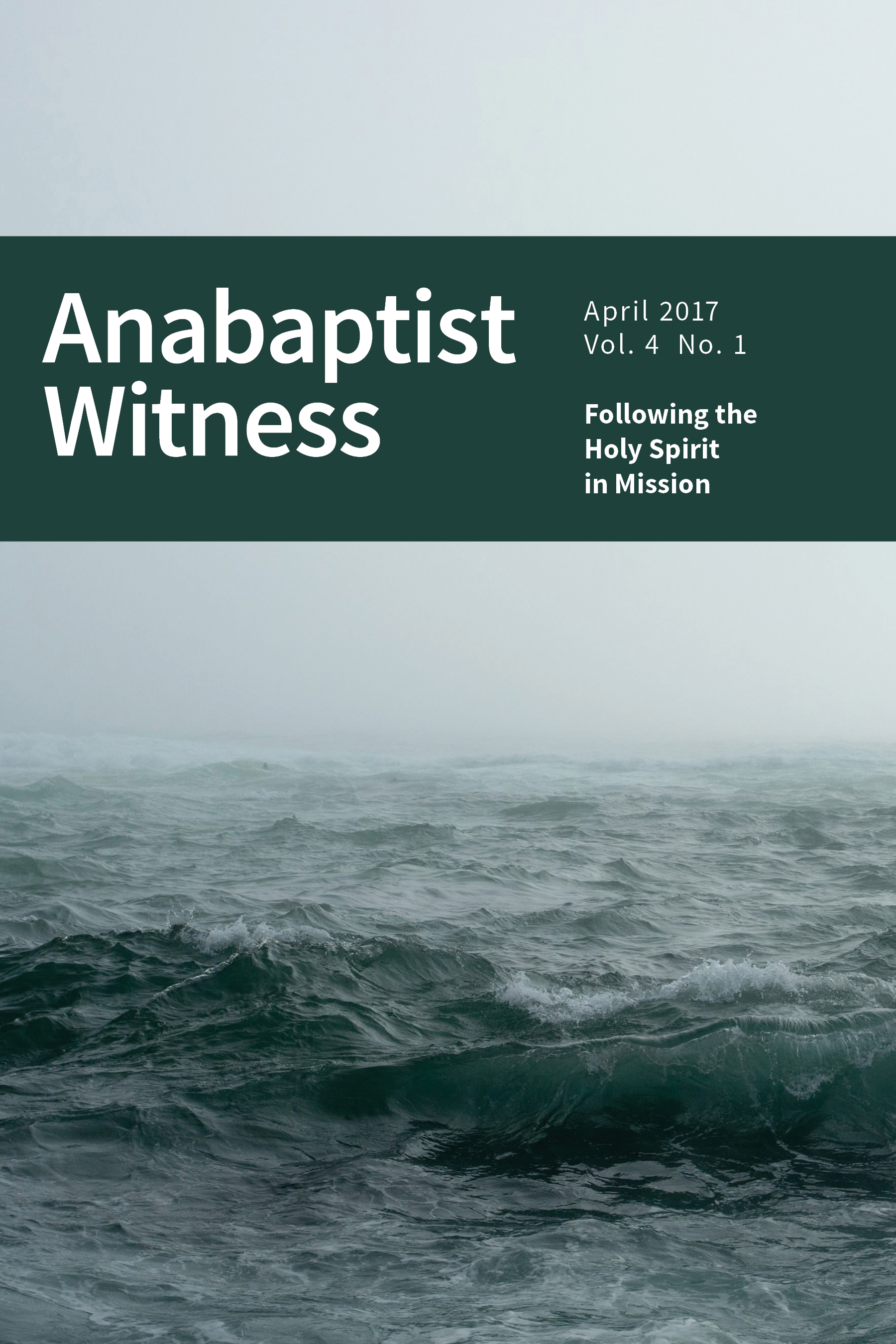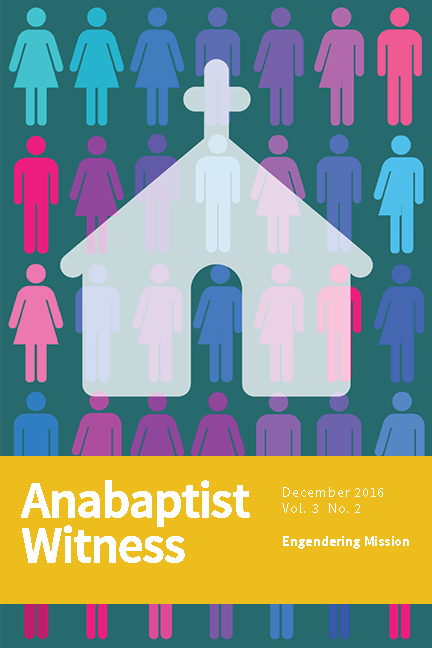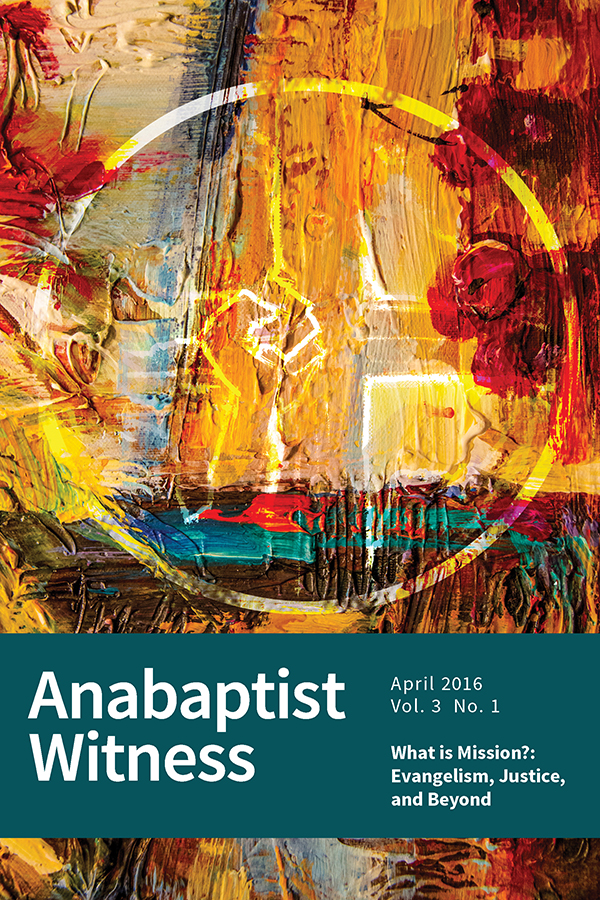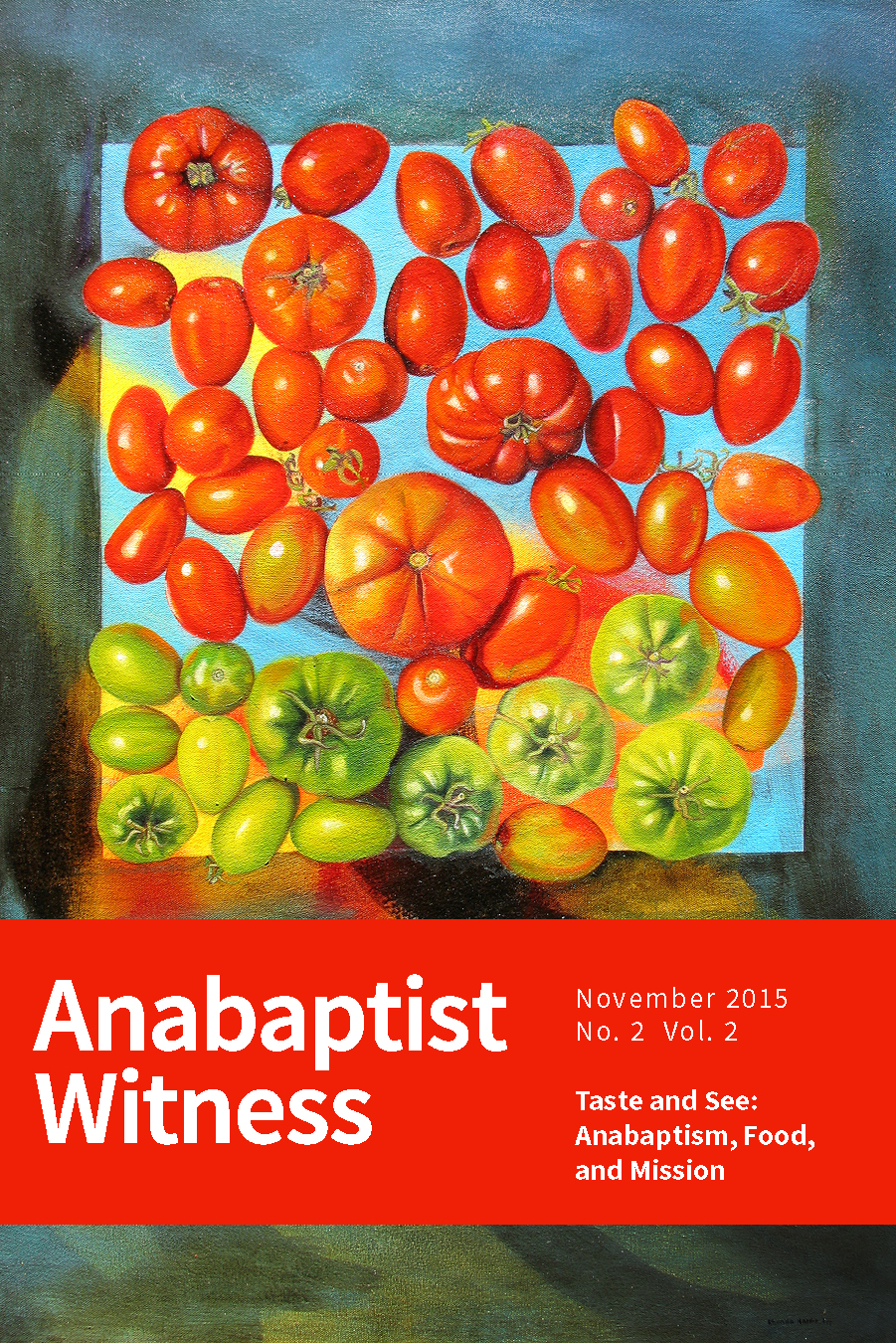Anabaptist Witness Archive
For issues of Anabaptist Witness past and present
Mission and Peace in Ethiopia
Volume 11, Issue 1
The articles in this issue are organized in two large sections. The first focuses on mission and peace efforts in the broader context of the Ethiopian nation, and the second focuses more specifically on Meserete Kristos Church (MKC) history and perspectives. The editors hope that this collection of essays and book reviews will contribute to the sharing of gifts for mutual growth among Anabaptist/Mennonite churches across the globe, especially in the lead up to the 2028 Mennonite World Conference Assembly in Ethiopia.
Witness in Palestine and Israel
Volume 11, Issue 2
Mennonite Central Committee workers arrived in the West Bank in 1950 to assist Palestinian refugees displaced during the 1948 Arab-Israeli War. Since then Mennonites have been involved in a variety of ministries in Palestine and Israel, from a hospital in Nazareth to scholarly research in Jerusalem to an English Language program in Gaza City. Authors in this issue of Anabaptist Witness reflect on 75 years of Mennonite witness in the region, in addition to topics such as challenges raised for Anabaptists by Palestinian liberation theology; the 2017 Mennonite Church USA resolution "Seeking Peace in Israel and Palestine"; and recent efforts to organize Mennonites in the US to call for a ceasefire in Gaza and an end to the Israeli occupation of Palestinian territory. The issue includes essays, sermons, poetry, and images.
Mission & Education
Volume 10, Issue 1
The essays in this issue of Anabaptist Witness explore some of the opportunities and challenges that emerge when the goals of education and mission intersect. Authors reflect on themes such as interculturality, peace, the embodied gospel, and imperialism in relation to educational experiences in Colombia, Ecuador, Egypt, England, Indonesia, Iraq, and the United States. The issue was guest edited by Shin Ji Kang (James Madison University) and Ron Shultz (Eastern Mennonite University).
New Anabaptist Communities
Volume 10, Issue 2
This issue of Anabaptist Witness contains articles from Britain, Canada, India, and the United States on the theme of “New Anabaptist Communities.” Many of the articles reflect on denominational, conference, and parachurch efforts to start new communities, while some of them narrate grassroots efforts to found congregations outside of any institutional prompting. Many of the articles reflect theologically on connections between Anabaptist identity, mission, peace, and justice. Taken together, the essays suggest various paths forward in making connections between growth and discipleship, between the intentional creation of new communities and faithful witness to Jesus.
Mission & Formation
Volume 9, Issue 1
How are Anabaptists formed for witness? This issue of Anabaptist Witness calls attention to the dynamic process of communal and personal formation that impacts witness. Essays and poetry explore this theme in relation to disability, God images, sexuality, the Narrative Lectionary, and communities and mission work in Canada, Ethiopia, Mexico, and the United States. The book and film reviews included in the issue reflect on the global church, race, and ecology. Overall, this issue unsettles predominant Anabaptist-Mennonite accounts of formation and witness in order to encourage a diversity of approaches in the church and academy.
Mission & Health
Volume 9, Issue 2
The gospels portray physical healing as a central component of Jesus’s ministry, and the Acts of the Apostles and the epistles suggest that healing was important in the early church. Caring for and restoring the integrity of the body is, in these New Testament examples, a sign of creation’s renewal and the arrival of God’s reign. Even when Christians have lost sight of this precedent, emphasizing instead an otherworldly salvation of the disembodied soul, the ministry of healing has rarely been completely discarded. This issue of Anabaptist Witness explores the place of healing in the church’s conception of its purpose and task.
Worship and Witness
Volume 8, Issue 1
To witness is to observe a statement or action or to profess one’s religious beliefs. We can witness God’s work in the world or humans’ good and harmful deeds. We can proclaim our beliefs, in words and actions, to one another within and beyond our faith communities.
Mission and Protest
Volume 8, Issue 2
In 1967 Vincent Harding challenged a Mennonite World Conference audience to follow Jesus by joining the protest movements that were then spreading around the world. As we experience another period of massive global protest, how might the church take up Harding's invitation today? What does it mean to consider protest as part of the church's mission? This issue explores these questions through poetry, philosophy, theology, and history, with discussions of raising children at protests, a group of American missionaries who came to protest their country's war in Vietnam, and recent protests in Colombia.
Omnibus Edition
Volume 7, Issue 1
Although the essays in this issue were not written in response to a call on a specific theme, each of them wrestles in its own way with possibilities for a different, non-imperial form of mission—one centered in trust in God, in care for the marginalized, in healing transformation of conflict, and in resistance to injustice. Anabaptism is no stranger to imperialism, having been its victim and its agent—and sometimes both at the same time. These essays are born of that acquaintance and point to a more healthy and just Anabaptist witness.
Displacement: Indigenous Peoples, Land, and Mission
Volume 7, Issue 2
The legacy of boundary-crossing colonial mission includes massive displacement—of native peoples from their homelands in Africa and the Americas, and of the produce of many lands, such as sugar, tobacco, and opium, for imperial purposes. The coerced movement and violent destruction of bodies and goods entails further displacements of psyches and families, cultures and languages. Any theology of mission that commends Jesus’s call, that advises packing up and moving across borders, must reckon with the history of missional displacement.
Mission in Conflict Zones
Volume 6, Issue 1
Anabaptists around the world are engaged in costly mission in conflict zones. Some of these Anabaptists face the threat of death, kidnapping, and rape. The articles in this issue of Anabaptist Witness show that many living and working in conflict zones find Anabaptist and Mennonite theology a helpful aide to their understanding and practice of Christian mission—and, furthermore, that Anabaptist and Mennonite theology is changing in response to the realities of mission in these contexts. Articles treat mission in Yemen, Syria, the West Bank, Ukraine, Nigeria, South Africa, Colombia, and Chile.
Mission & Migration
Volume 6, Issue 2
To talk about migration is to talk about identity, both individual identity and the collective identities of communities of faith. Forced migration characterized and shaped the early Anabaptist movement—a movement created, in part, to ensure religious freedom and the ability to practice faith as separate communities. This pattern of movement, originally meant to support a closed community, has resulted in a migration of theology, growing missions movements, and the spread of Anabaptism across the world.
Mission & Creation
Volume 5, Issue 1
In the midst of the ominous message that we are careening toward destruction, there are signs of hope everywhere in acts large and small that people are taking to mitigate the effects of climate change and restore damaged lands. Essays in this issue of Anabaptist Witness explore and propose some of these hopeful acts: community gardens in the Netherlands and Syria, environmental activism in the UK, the carbon impact of mission agency travel, and imaginative speech about God and the environment shaped by dialogue with indigenous communities and embracing "wildness" in one's soul.
The Mission of God and Global Partnerships
Volume 5, Issue 2
Mission partnerships must address historical sins, financial limitations, and theological differences. In spite of the difficulties, we remain drawn into partnerships by friendship and mutual need, by overlapping history and vision, and, ultimately, by the Holy Spirit. Partnerships are difficult—but how good and pleasant it is to dwell in unity (Ps 133:1)! This issue of Anabaptist Witness collects papers on global mission partnerships from the 2018 Council of International Anabaptist Ministries Plenary, as well as a selection of additional articles on the theme.
Misson and Suffering
Volume 4, Issue 2
The contributors to this issue of Anabaptist Witness have strained to see God amid experiences of suffering in mission, and in doing so they point to the hope of resurrection life. Articles, poems, and artwork address missionary suffering, mission that responds to suffering, and mission that causes suffering. Specific topics treated include Ausbund hymns, Sufi Islam, health crisis during ministry, marginalized indigenous communities in southern Mexico, and Mennonite participation in the Canadian Residential Schools program for indigenous children.
Following the Holy Spirit in Mission
Volume 4, Issue 1
How have Anabaptists and Mennonites followed the Spirit in mission? How might we follow the Holy Spirit in mission? Articles in this issue address these question through examination of Anabaptism and the Pentecostal-Charismatic movement; early charismatic expressions among Russian Mennonite Brethren; Spirit-empowered witness and the church in South Africa; Anabaptist inspiration for the church in postmodern Britain; and the story of the Meserete Kristos Church in Ethiopia. The issue also features poetry and book reviews.
Engendering Mission
Volume 3, Issue 2
Through strategy, organization, and subversion, women have proven time and again that the Holy Spirit gifts individuals, regardless of gender, with the power to teach, preach, and minister to others. In this issue you will find stories of courageous individuals determined to share the gospel. Their legacies and the challenges they put forth provide us with much to draw on as we consider gender in our changing contexts, and what it means to bear the good news.
What is Mission? Evangelism, Justice, and Beyond
Volume 3, Issue 1
What is Christian mission? Is it verbally sharing the gospel in order to convert non-believers? Is it social justice ministry aimed at realizing God's shalom on earth as it is in heaven? Is it some mixture of both, or something else entirely? Contributors to the current issue of Anabaptist Witness engage these crucial questions through theological, biblical, and personal reflections on ministry in a wide variety of settings. While most contributors agree that mission involves all of life, disagreements are evident over the specific shape of mission practice. Still, there seems to be an emerging consensus that mission involves vulnerable encounters with others. We hope that this issue will help you answer the question, What is mission?
Taste and See: Anabaptism, Food, and Mission
Volume 2, Issue 2
In the beginning God created. This chef of all things cooked up a feast of earth, plants that grow fruit, and beings to enjoy and care for this abundance. And God called these creations good. We are the custodians of this good earth.
Every meal we eat we are connected with those who dreamed up the recipes, nurtured the soil, picked and washed and shipped the goods, and sold the ingredients to us in our markets and stores. From the bread we break at the Lord’s Supper, to the potlucks we share and the cookbooks we produce, our interaction with food connects us with our creator and sustainer, and to individuals living around the world.
Taste and see what God is up to around the world by engaging this latest issue of Anabaptist Witness, which includes original poetry, calligraphy, paintings, reflections and more.
Anabaptist Mission and Theology of Religions
Volume 2, Issue 1
Consideration of the church's missional constitution and context lead to the claim that interaction with religious others is a necessary element of Anabaptist witness. But what does this interaction look like? What should it look like? What resources do Christian theology and missiology offer as guides to understanding and engaging other religions? The essays in this issue of Anabaptist Witness offer various responses to these questions, questions that make up the field of the "theology of religions."
Anabaptist Identities in a Changing World
Volume 1, Issue 1
Mission has been central to the Anabaptist movement from its beginning in the sixteenth century to its global presence today. This engagement in God’s mission to and for the world continues to be facilitated by and stretched through dialogical missiological thinking and reflection. To these ends, we hope the relaunch of the journal Anabaptist Witness, previously known as Mission Focus, will drive the continuous evolution of the field of missiology, providing a place for a global Anabaptist and Mennonite dialogue on key issues facing the church in mission.
